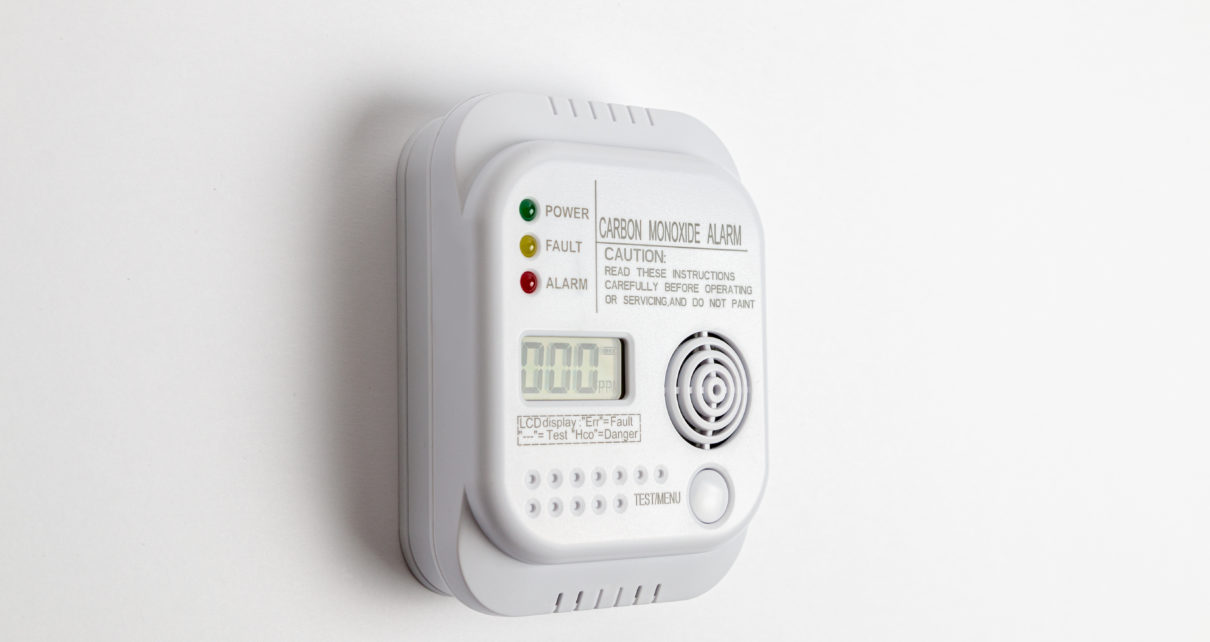
A carbon monoxide detector is an absolute essential every homeowner and renter needs. If you are a homeowner, upkeep and maintenance of this detector falls under your responsibility. If you are a renter, then that responsibility is deferred to your landlord. By fire code law, landlords and homeowners are required to keep these detectors in your home and fully functional, but that doesn’t answer the questions of where to put carbon monoxide detector.
Carbon monoxide detectors are important to have in your home, as they can detect high amounts of carbon monoxide and alert you of the danger. A detector is needed because carbon monoxide is a deadly gas that has no smell. It is extremely hard and nearly impossible to detect a dangerous amount of carbon monoxide in your home without the help of a device.
Unfortunately, faulty detectors have put families at risk in the past and have even led to deaths. According to NIST.gov, carbon monoxide poisoning has “kill[ed] hundreds of people and [has] hospitalize[d] tens of thousands every year in the U.S.” This is why it’s important to replace your detector every five to seven years.
In addition, every now and again you will need to replace your carbon monoxide detector’s batteries. You will know if the batteries need to be replaced if you hear a frequent “chirping” sound coming from it, typically followed by a small flash of light. This sound is a warning that the device is low on battery.
Where to Put a Carbon Monoxide Detector? The Best Place
If you’re wondering where you should put a carbon monoxide detector in the home, there are a few key places. Before we dive in, we want to encourage you to check with the EPA guidelines to ensure you are following accurate safety procedures. Now, the first and most important point that needs to be stated is that carbon monoxide detectors need to be placed at least five feet above the floor. This is because the carbon monoxide gas is lighter than air, meaning it has a tendency to rise much like warm air does. A detector placed too low may miss important signals.
The next most important fact to know is that each floor needs its own carbon monoxide detector. That means if you live in a two or three-story home, each floor needs at least one detector. This same rule applies to apartment buildings with multiple floors — each separate unit needs its own carbon monoxide detector.
If you choose to have just one detector per floor, the optimal placement for this device is in a sleeping area. If the alarm goes off while you are sleeping, it will wake you up and afford you enough time to evacuate safely. Houses with sprawling square footages are safest with multiple detectors in a home, regardless of whether it is a one-story building or not.
Another useful tip is to use common sense when placing your detector. For example, keep out of reach of children and pets, and make sure the location you choose is not an easy grab for small hands (or paws). Lastly, it’s important to keep your carbon monoxide detector away from flame-producing appliances.
How Far Should a Carbon Monoxide Detector Be from a Furnace?
You should never place a carbon monoxide detector too close to a furnace. In fact, the further away, the better. The recommended distance when installing a detector is at least 15 to 20 feet away from the furnace. Having a carbon monoxide detector any closer could cause it to pick up false readings. A furnace emits small particles of carbon monoxide that are completely harmless, but could still set off a false alarm.
Obviously, having the alarm go off every time the furnace is turned on can be annoying. In addition, if an actually dangerous level of carbon monoxide is detected, you may think it is just another false alarm and ignore it.
Another smart idea is to make sure your furnace is maintained regularly, as an extra line of defense, against any particles of carbon monoxide potentially leaking out. Keeping your furnace in good condition is a surefire way to have peace of mind. As you can see, it can be easy to place a carbon monoxide detector in the wrong spot if one is not apprised on the best practices. With this knowledge under your belt, you can sleep well at night knowing your home is up to code.
Bottom Line
Now that you are more educated about where to place a carbon monoxide detector in a home, now is the time to check if your current carbon monoxide detector hits all the necessary checkpoints. Here is a quick list for your consideration:
- Placement
- Battery life
- # of detectors in home
Remember: the dangers of carbon monoxide poisoning are high, making it vital to check in on your devices periodically to ensure they are still functioning properly. Even low levels of carbon monoxide poisoning can result in mental impairment and exhaustion. Higher levels can result in greater impairments, permanent brain damage and even death.
If you or someone in your household falls under a list of vulnerable people that includes, children, babies, pregnant women, people with circulatory or respiratory issues or the elderly, take it as an added reason to ensure your detectors are up to code. By staying proactive, you can ensure your home is a safe environment for you and your family.
